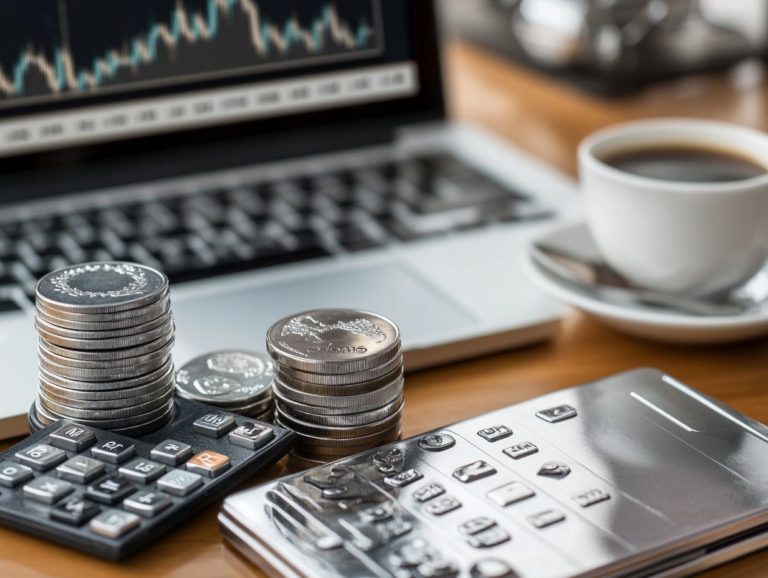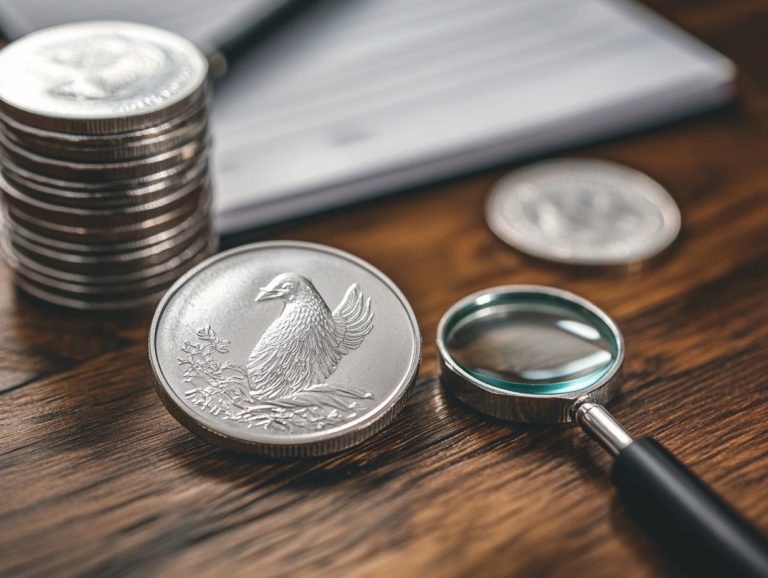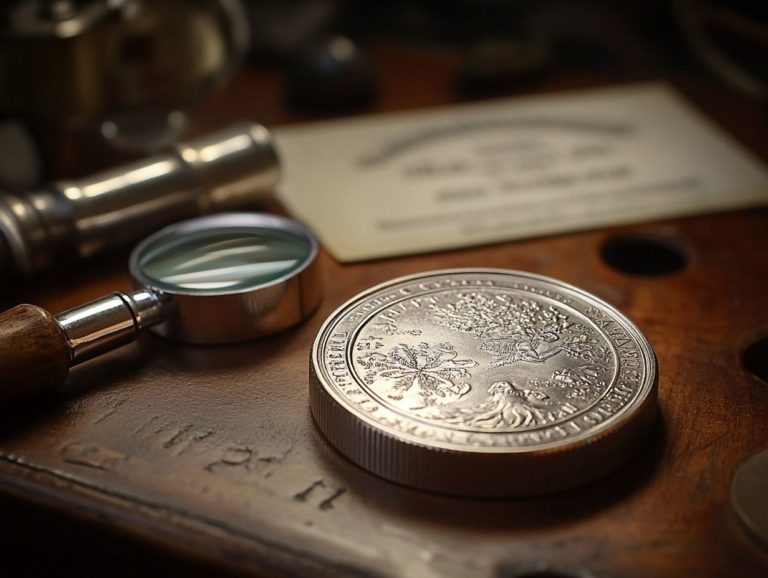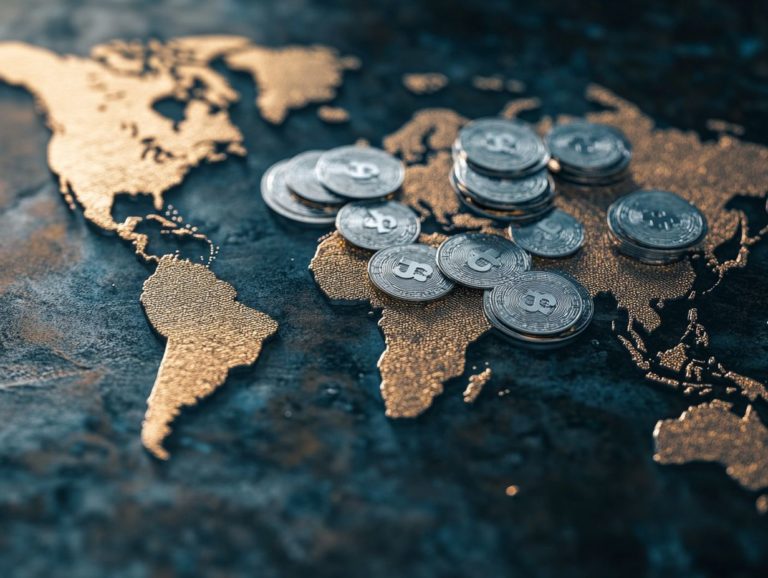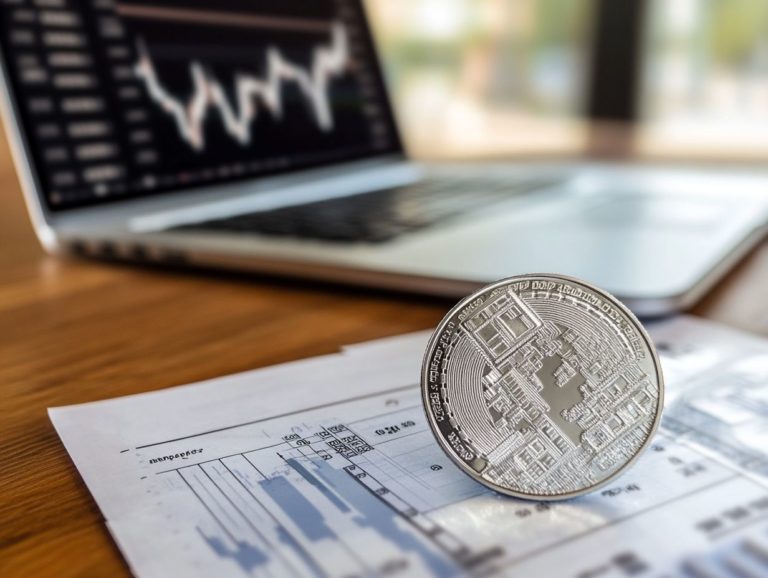Tax Implications of Selling Silver Investments
Silver investments can be a valuable addition to your portfolio, providing both potential profit and a safeguard against economic uncertainty.
Understanding the various types of silver investments, along with their benefits and risks, is essential for navigating this landscape effectively.
This article delves into the tax implications of selling silver, covering capital gains tax a tax on the profit you make when selling an asset for more than you paid for it and reporting requirements, while also offering strategies to help you minimize your tax burden.
It also addresses broader considerations such as inflation, diversification, and risk management, which are key factors every silver investor should keep in mind.
Jump in now to discover crucial insights that will empower your investment decisions in the world of silver investments.
Contents
- Key Takeaways:
- Overview of Silver Investments
- Tax Implications of Selling Silver Investments
- Strategies for Minimizing Tax Impact
- Other Considerations for Silver Investors
- Frequently Asked Questions
- What are the tax implications of selling silver investments?
- How is the capital gains tax calculated on silver investments?
- Is the capital gains tax rate different for short-term and long-term holdings?
- Can I deduct any investment expenses when calculating capital gains tax on silver investments?
- Are there any specific rules for reporting silver investment gains on taxes?
- Are there any tax benefits to holding onto silver investments for a longer period of time?
Key Takeaways:
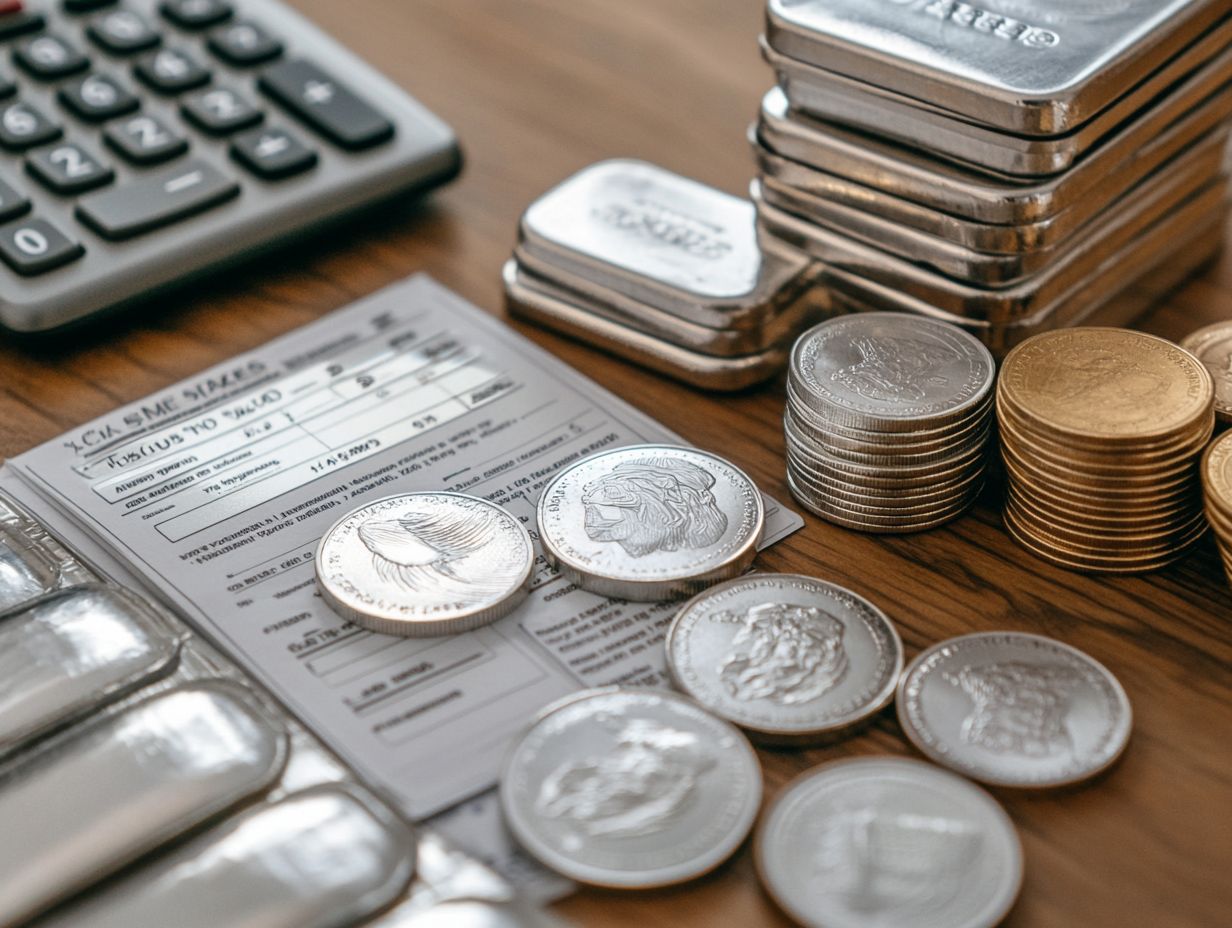
- Selling silver investments may trigger capital gains tax, which is based on the difference between the purchase and sale price.
- Investors should be aware of reporting requirements for silver sales, including potential penalties for failing to report accurately.
- Timing sales strategically and utilizing tax-advantaged accounts can help minimize the tax impact of selling silver investments.
Overview of Silver Investments
Silver investments stand out as a versatile option within the precious metals arena, alongside gold. They offer a solid hedge against market volatility and inflation.
In Canada and across North America, you ll find a silver market rich with diverse investment opportunities, from physical silver to silver stocks and exchange-traded funds (ETFs), catering to both experienced traders and those just starting out.
As market outlooks increasingly emphasize sustainability and technological innovation, silver s significance in industries like AI, robotics, and life sciences amplifies its importance in today s evolving investment landscape.
Different Ways to Invest in Silver
You have a wealth of options when it comes to investing in silver, including physical silver, silver stocks, and exchange-traded funds (ETFs).
Each of these choices carries its own set of advantages and disadvantages. For instance, physical silver offers you tangible ownership and serves as a reliable hedge against economic uncertainty. However, it requires secure storage and may involve extra costs like premiums and insurance.
On the other hand, silver stocks allow you to tap into the precious metals market in a more liquid format, though they can be quite volatile and susceptible to the performance of the companies behind them.
ETFs provide a convenient route to achieve diversified exposure to silver with lower fees and straightforward trading, but they might not perfectly mirror the price movements of physical silver.
Understanding how these investments integrate into your broader trading strategies is crucial for maximizing your returns.
Benefits and Risks
Investing in silver presents a myriad of benefits, such as the potential for capital gains and the opportunity to diversify your investment portfolio. However, it s essential to acknowledge the inherent risks that accompany this venture.
What makes silver particularly enticing is not just its status as a tangible asset. Its liquidity allows for quick cash conversion when needed. As technology advances, the demand for silver continues to rise, especially in electronics and renewable energy solutions, enhancing its appeal as an investment.
In times of inflation, silver can act as a reliable hedge, helping to preserve your value over the long haul. Yet, remaining vigilant about market volatility and potential demand fluctuations is crucial, as these factors could significantly impact your investment strategies and returns.
Striking a balance among these elements is key to maximizing capital gains while minimizing risks.
Tax Implications of Selling Silver Investments
Knowing the tax rules regarding silver sales can save you money and keep you compliant. Grasping the tax implications of selling silver investments is essential for maximizing your investment returns while ensuring compliance with IRS regulations.
The capital gains tax can have a substantial impact on your profits from these transactions, making it imperative to stay informed and strategic in your approach to tax planning for precious metals investors.
Capital Gains Tax
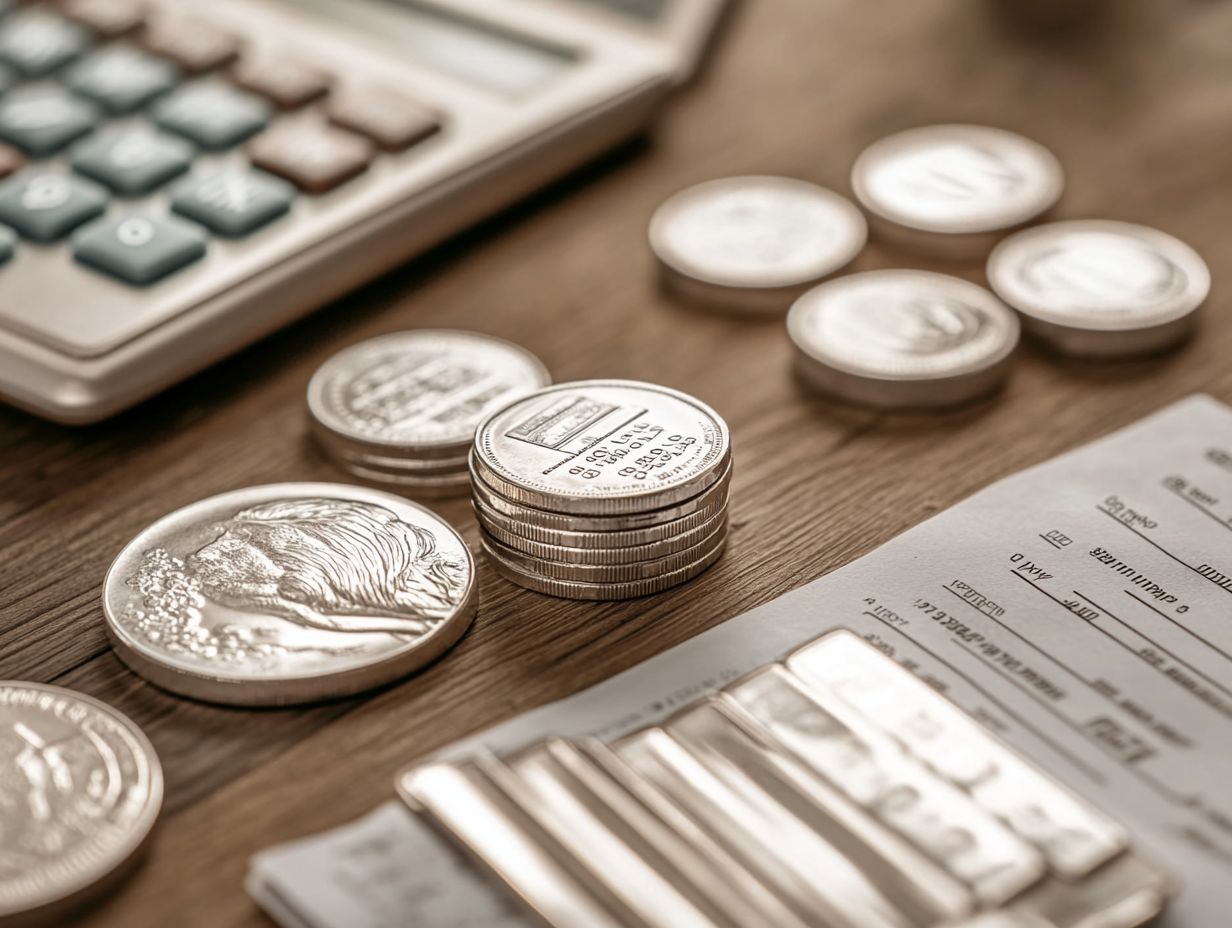
Capital gains tax is crucial when selling silver. It determines the taxation on your profits from these transactions.
Understanding how this tax is calculated is essential for navigating your potential profitability while ensuring compliance with IRS regulations. When you sell silver, the profit you realize is known as a profit from selling an investment. This is classified based on the length of your investment.
Short-term gains are profits from assets held for one year or less. These profits are taxed at your higher ordinary income tax rate.
In contrast, long-term gains those from investments held for more than a year enjoy lower preferential tax rates. Recognizing these distinctions can significantly shape your investment strategies and tax planning. This allows you to optimize both your returns and tax obligations.
Reporting Requirements
When selling silver investments, it s essential to be aware of the specific reporting requirements established by the IRS. This ensures you meet your income tax obligations.
Keep accurate records to meet IRS requirements. You ll need to maintain meticulous documentation of your transactions, including all sales receipts, invoices, and any related costs that might influence your capital gains calculations.
Using Form 1099-B to report these sales to the IRS can simplify your tax filings. Consulting with a financial advisor can be very helpful. They can guide you through the complexities of taxation related to precious metal sales, helping you avoid potential pitfalls or penalties along the way.
Strategies for Minimizing Tax Impact
Using effective strategies to minimize the tax impact of silver investments is crucial for enhancing your returns.
By being proactive in your tax planning, you can improve your portfolio’s performance and navigate the complexities of investment taxation.
Timing of Sales
Timing your sales can make a huge difference in your profits with silver investments. Market conditions can significantly influence your capital gains tax liabilities.
Keep a close eye on market trends. Fluctuations in silver prices can reveal perfect moments to sell. A sharp awareness of the current market outlook enables you to make informed decisions and maximize your returns.
When market demand surges or geopolitical uncertainties arise, prices can soar, leading to significant profits. On the flip side, personal financial circumstances, like unexpected expenses or changes in income, can also dictate the right time to liquidate your assets.
Striking a balance between these factors is essential, ensuring your sale aligns with both prevailing market conditions and your personal financial objectives.
Using Tax-Advantaged Accounts
Using tax-advantaged accounts for your silver investments can significantly save you money on taxes, particularly regarding long-term gains.
Incorporating silver into accounts like IRAs or 401(k)s allows you to defer taxes on any profits until retirement. This can reduce your overall tax burden. Understanding the tax implications of gold and silver IRAs can enhance your financial planning and protect your precious metals from immediate taxation, allowing for compound growth over time.
The regulations surrounding these accounts let you expand your portfolio with silver without facing immediate financial penalties, leading to a more diversified and resilient investment strategy. Ultimately, this can pave the way for a more secure retirement, highlighting the importance of integrating silver into your broader financial landscape. However, it’s also crucial to understand the cost of ignoring tax obligations for gold investments as you plan your strategy.
Other Considerations for Silver Investors
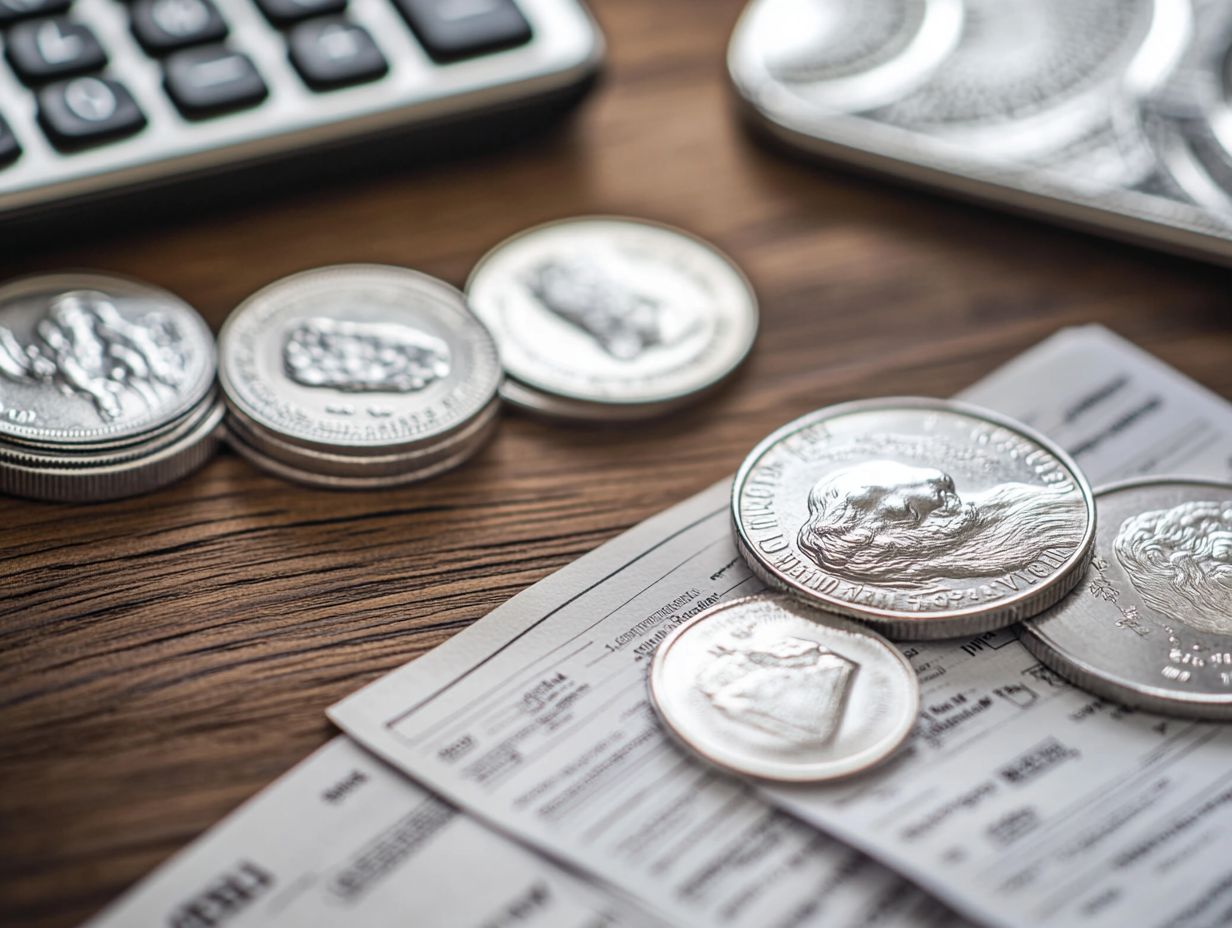
If you’re investing in silver, consider these important factors beyond mere market trends.
Inflation and economic indicators can significantly impact silver prices and shape your investment outcomes. Taking these elements into account will enable you to make informed decisions and understand the silver market better.
Inflation and Economic Factors
Inflation and various economic factors can profoundly impact silver s performance as an investment, shaping its demand and market outlook.
Historical data consistently reveals a strong correlation between rising inflation rates and the increasing value of silver. In times of economic uncertainty, investors often flock to precious metals as a safe haven, which naturally drives up prices.
This trend not only reinforces silver’s position as a hedge against inflation but also highlights its inherent volatility. As inflation persists or accelerates, experts predict that silver prices will experience fluctuations.
Stay alert to market changes and global economic trends. By understanding these relationships, you can better equip yourself to navigate the investment risks associated with silver.
Diversification and Risk Management
Diversification and effective risk management are crucial for you as a silver investor, allowing you to safeguard your portfolio against inevitable market fluctuations and investment risks.
By weaving silver into a diversified investment strategy, you enhance your resilience to economic downturns and inflationary pressures. Allocating a portion of your assets to silver whether through physical bullion, Exchange-Traded Funds (ETFs), or mining stocks provides a balanced approach that can help mitigate volatility.
Understanding various strategies, such as investing across different sectors or pairing silver with alternative asset classes, creates a comprehensive framework for your risk assessment. This diverse approach broadens your market exposure and fosters greater financial stability.
Start diversifying your investments today to protect your future!
Frequently Asked Questions
What are the tax implications of selling silver investments?
The sale of silver investments is considered a taxable event. This means that any gains from the sale will be subject to capital gains tax.
How is the capital gains tax calculated on silver investments?
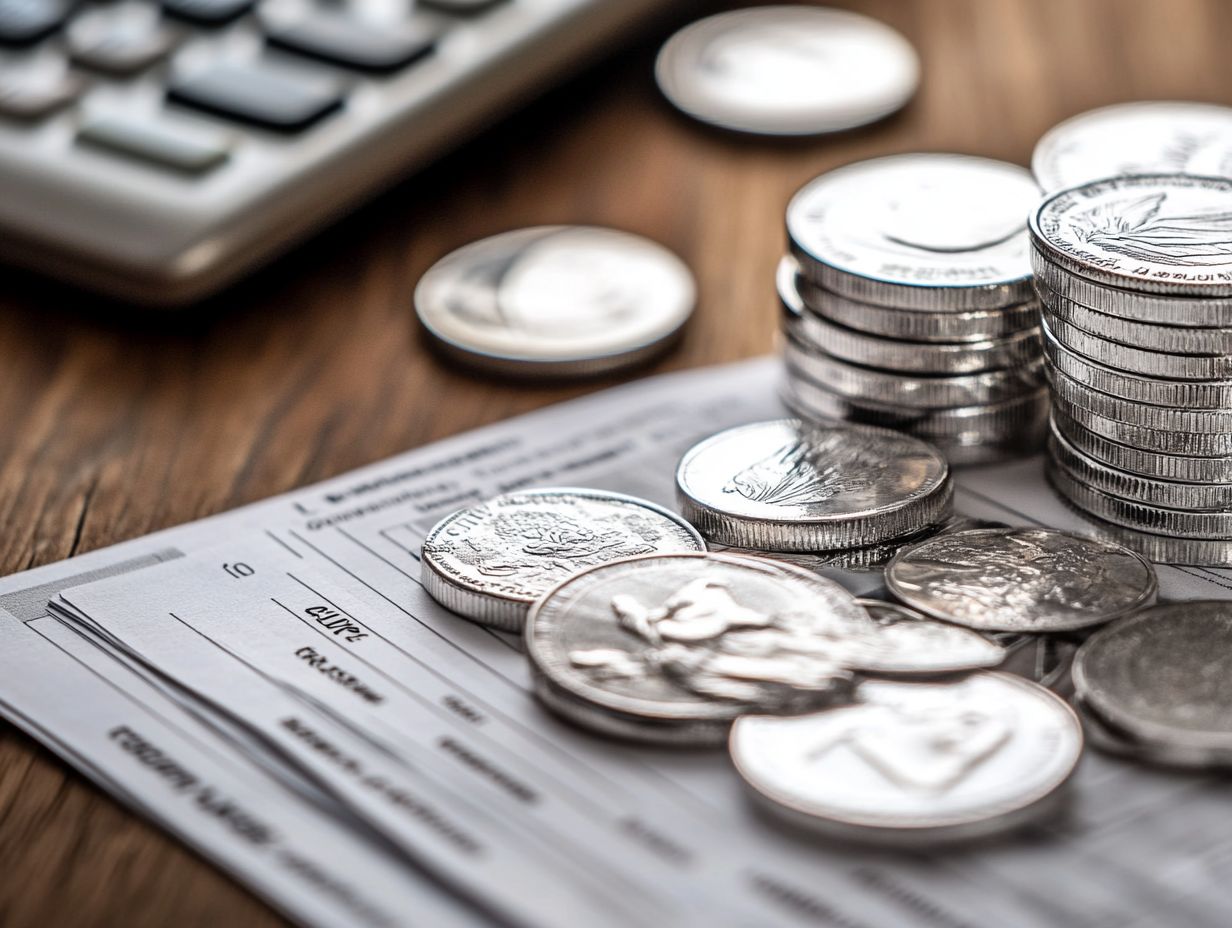
The capital gains tax on silver investments is calculated by taking the difference between the sale price and the original purchase price, also known as the cost basis. This amount is then taxed at the applicable capital gains tax rate based on the holding period of the investment.
Is the capital gains tax rate different for short-term and long-term holdings?
Yes, the capital gains tax rate is typically lower for long-term holdings, which are investments held for more than one year. Short-term holdings, or investments held for one year or less, are taxed at the individual’s regular income tax rate.
Can I deduct any investment expenses when calculating capital gains tax on silver investments?
Yes, certain investment expenses such as broker fees and storage costs can be deducted when calculating the capital gains tax on silver investments. These expenses can help reduce the overall tax burden on the sale.
Are there any specific rules for reporting silver investment gains on taxes?
Yes, when reporting silver investment gains on taxes, the specific form used will depend on the type of investment. For example, sales of physical silver will be reported on Form 8949, while sales of silver ETFs will be reported on Form 1099-B.
Are there any tax benefits to holding onto silver investments for a longer period of time?
Yes, keeping silver investments for a longer time can help you pay lower taxes on profits. This is a great opportunity if you can hold them for over a year, especially in a retirement account.










